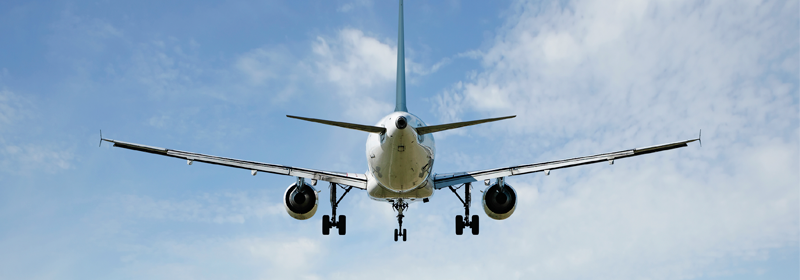- Indra’s Normarc GBAS satellite-based landing system reduces fuel consumption and requires less maintenance on ground infrastructure, improving cost effectiveness of airports and airlines
- Implementation of smarter technologies is key for adjusting to scenarios as the current one which threatens the competitiveness and profitability
- Indra’s system is currently being tested at various sites, including at Tenerife Norte Airport in cooperation with ENAIRE

The next generation landing system, Normarc GBAS by Indra, provides more flexible flight patterns when aircraft approach the airport, such as continuous descend, steeper and shorter approaches. This reduces flight time, fuel burn, CO2 emissions and noise pollution, benefiting the environment and saving costs for airlines who are severely affected by the covid-19 pandemic. The landing system also reduces airports’ maintenance costs as a single system is sufficient to cover all runways.
Digitalization is key in handling the impact of covid-19 for companies in most sectors, and the air traffic industry is no exception. Satellite-based landing systems is one of the technologies with potential to improve cost efficiency in the longer term, and should be implemented by airports adjusting to the new reality requiring greater flexibility.
The technology allows for airports to increase capacity when the market recovers. At the same time, communities located near the airport will benefit from reductions in flight noise. Aircraft can fly higher when approaching the airport, and as landings become steeper, fewer areas are affected by noise. This may open for the possibility of building residential areas in locations that were previously considered unfit for living due to noise, or reduce the need for noise abatement measures in existing residential areas.
A GBAS GAST D ground station consists of GPS sensors, a processing section and VHF Data Broadcast Units that transmit data to approaching aircraft. A single system has capacity of handling up to 48 diverse approaches simultaneously, covering all runway ends and helipads of an airport.
Indra has for years been a driver for development of satellite-based landing systems. The Normarc GBAS GAST D is the only system capable of providing landing guidance in low-visibility conditions, and the company is in the process of certifying for category III operations.
Test stations are installed at several airports. The latest inclusion is Tenerife Norte Airport, where Indra and Spanish air navigation service provider ENAIRE are working to validate the system’s performance in equatorial regions.
Indra Air Solutions
Indra is the only company in the world capable of delivering an integrated response, with its own cutting-edge technology.
Under the name of Indra Air Solutions, all its business lines have been grouped together to provide a flight management solution from the moment the aircraft starts to move across the airport until it lands at its destination, which consists of: Air Automation, Air Communication, Air Navigation, Air Surveillance, Air Information, and Air Drones.
About Indra
Indra (www.indracompany.com) is one of the leading global technology and consulting companies and the technological partner for core business operations of its customers worldwide. It is a world-leader in providing proprietary solutions in specific segments in Transport and Defense markets, and a leading firm in Digital Transformation Consultancy and Information Technologies in Spain and Latin America through its affiliate Minsait. Its business model is based on a comprehensive range of proprietary products, with a high-value focus and with a high innovation component. In the 2019 financial year, Indra achieved revenue of €3,204 billion, with more than 49,000 employees, a local presence in 46 countries and business operations in over 140 countries.